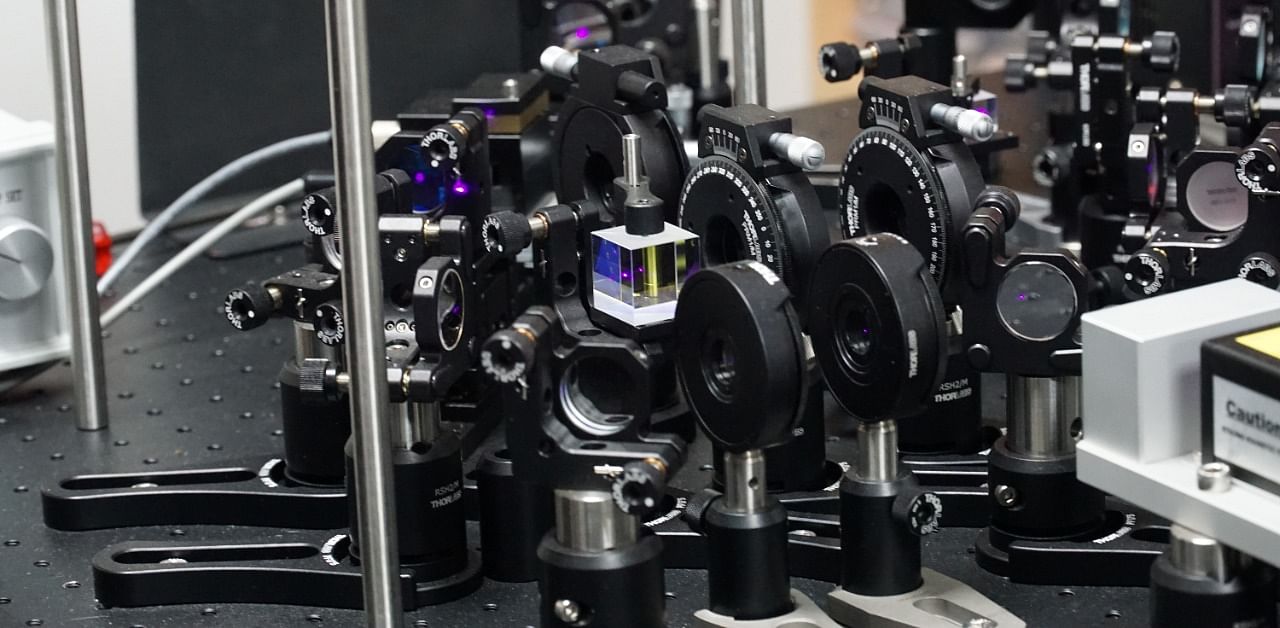

In what is a first for India, scientists from the Raman Research Institute (RRI) have made a breakthrough in quantum communications technology which has major military, banking and election security applications.
Since 2017, the research team, helmed by Professor Urbasi Sinha, has been working with the Indian Space Research Organisation (Isro) on quantum cryptography as part of the Quantum Experiments using Satellite Technology (QuEst) project. The project aims to encrypt a message which cannot be deciphered by a third party, be it a hacker or a foreign power, without the use of a decryption key, which itself is shared secretly in the message stream.
“This is what cryptography is all about,” explained Dr Sinha, adding that the most important objective of the project is to share these quantum keys across long distances. This has long been the holy grail for quantum scientists.
Such a breakthrough, which has not yet happened officially anywhere in India, will dominate future communications, ranging from civilian banking transactions to ultra-secret defence-related messages.
During a demonstration on Sunday, the research team showed the technology in which they could share this secret key across a 50-metre free space from one building to another, using only the atmosphere. “The 50-metre transfer is limited by the only available stretch of open ground at the Institute. We are aiming to achieve long-distance transfers using astrophysics facilities at the Gauribidanur,” Dr Sinha explained.
Achieving longer distances is important as the aim is to effectively transmit keys from ground stations to satellites, which means covering ranges of at least 12 km from the surface of the earth to orbit altitudes. RRI described the transfer as a “breakthrough milestone” for the project “as this will pave the way for longer distances using atmospheric channels ultimately culminating with the ground to satellite-based secure quantum communications.”
To date, no country has successfully carried out a successful so-called quantum key distribution from the earth to a satellite in orbit. However, in 2017, China managed to carry out a “downlink” transfer, meaning that a key was transferred down from a satellite to a ground station.
Dr Sinha pointed out that the challenge of downlink transfers is easier to surmount when compared to “uplink” transfers because a key being transferred down through the atmosphere via a photon stream faces significantly few atmospheric distortions. “Because the atmosphere is thinner at high altitudes, the chance of success is more. However, all countries want to carry out successful uplink transfers, which we and ISRO are working to achieve,” she said.
Last year, Dr Sinha’s Quantum Information and Computing (QuIC) lab reached another milestone through the successful development of a toolkit that enabled safe quantum key distribution between devices.